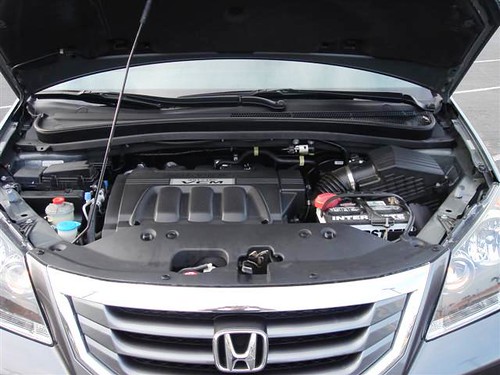
Chip Foose isn’t just a name in the automotive world; he’s a phenomenon, a visionary whose touch transforms metal and mechanics into rolling works of art. With a career spanning decades, Foose has consistently redefined what’s possible in custom car building, blending classic aesthetics with cutting-edge engineering. His signature style—clean lines, impeccable proportions, and an unwavering commitment to both form and function—has earned him legendary status among enthusiasts and peers alike.
For many, the name Foose evokes images of Ridler-winning showstoppers and the exhilarating week-long transformations seen on “Overhaulin’.” But beyond the spotlight, his work is characterized by a level of polish and creative refinement that truly sets it apart. Every curve, every panel, every meticulously integrated detail reflects a designer’s eye that doesn’t just build cars, but sculpts automotive dreams.
In this deep dive, we’re going to pull back the curtain on some of the most “insane” and iconic custom cars to emerge from Foose’s fertile imagination and skilled hands. These are the machines that not only showcase his technical prowess and artistic flair but have also fundamentally shaped the landscape of hot rod and street machine history. Prepare to be amazed as we explore the blueprints of a true automotive legend.

1. **0032 Roadster**The 0032 Roadster stands as a pivotal moment in Chip Foose’s illustrious career, serving as the vehicle that propelled his name onto the global stage. It wasn’t just a custom car; it was a modern reinterpretation of the quintessential ’32 Ford, a design exercise that paid homage to tradition while boldly stepping into the future. This masterpiece captured the prestigious America’s Most Beautiful Roadster award in 2000, solidifying Foose’s reputation as a force to be reckoned with in the custom scene.
What truly set the 0032 Roadster apart was its meticulous attention to detail and groundbreaking engineering. The car featured a hand-built body, a testament to Foose’s dedication to bespoke craftsmanship. Beneath its sleek exterior lay an independent suspension system both front and rear, an advanced setup that promised exceptional handling and a smooth ride, pushing the boundaries of traditional hot rod performance.
The undercarriage of the 0032 Roadster was as artfully executed as its visible components, detailed to perfection and looking every bit as impressive as the flawless paintwork above. Powering this modern classic was an LT1 Corvette engine, but the real story was in the proportions—lower, tighter, and altogether sleeker than any stock ’32 Ford, every element smoothed, tucked, and balanced to achieve an unprecedented level of perfection. This was more than a hot rod; it was a definitive statement of design philosophy. The car’s success even helped Chip establish his Newport Beach Factory where the famous reality show “Overhaulin'” was later filmed.
Car Model Information: 2017 Maserati Levante S
Name: Ford Bronco
Caption: 2021 Ford Bronco Outer Banks (4-door)
Manufacturer: Ford Motor Company
Production: 1965–1996,2021–present
Class: Compact SUV
Layout: Front-engine, four-wheel-drive
BodyStyle: SUV
Successor: Ford Expedition
ModelYears: 1966–1996,2021–present
Categories: 1970s cars, 1980s cars, 1990s cars, 2020s cars, All-wheel-drive vehicles
Summary: The Ford Bronco is a model line of SUVs manufactured and marketed by Ford. The first SUV model developed by the company, five generations of the Bronco were sold from the 1966 to 1996 model years. A sixth generation of the model line was introduced for the 2021 model year. The nameplate has been used on other Ford SUVs, namely the 1984–1990 Bronco II compact SUV, the 2021 Bronco Sport compact crossover, and the China-only 2025 Bronco New Energy.
Originally developed as a compact off-road vehicle using its own chassis, the Bronco initially competed against the Jeep CJ-5 and International Scout. For 1978, Ford enlarged the Bronco, making it a short-wheelbase version of the F-Series pickup truck; the full-size Bronco now competed against the Chevrolet K5 Blazer and Dodge Ramcharger.
Following a decline in demand for large two-door SUVs, Ford discontinued the Bronco after the 1996 model year, replacing it with the four-door Ford Expedition; followed by the larger Ford Excursion. After a 25-year hiatus, the sixth-generation Bronco was reintroduced in 2021 as a mid-size two-door SUV. It is also offered as a full-size four-door SUV with a 16 in (41 cm) longer wheelbase. It competes directly with the Jeep Wrangler as both a two-door and a four-door (hardtop) convertible.
From 1965 to 1996, the Ford Bronco was manufactured by Ford at its Michigan Truck Plant in Wayne, Michigan, where it also manufactures the sixth-generation version.
Get more information about: Ford Bronco
Buying a high-performing used car >>>
Brand: Ford Model: 0032 Roadster
Price: $20,995 Mileage: 62,696 mi.
Read more about: The Unvarnished Truth: 15 Cars That Left Owners Fuming With Performance Failures and Reliability Nightmares
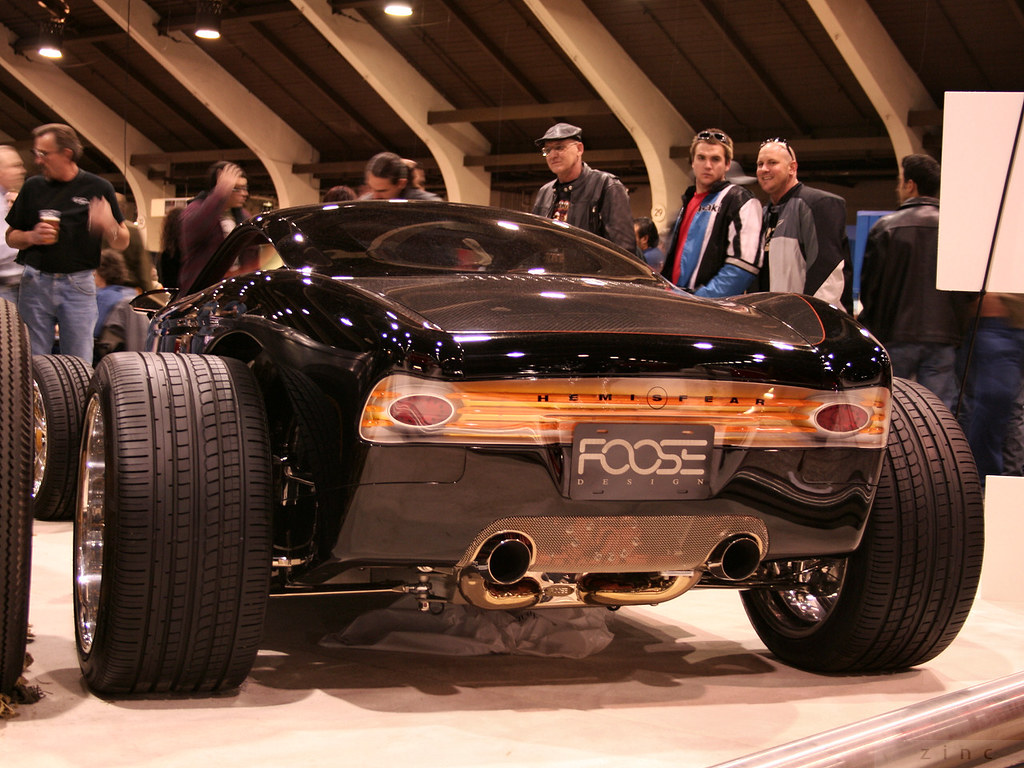
2. **Hemisfear**The Hemisfear is a testament to Chip Foose’s enduring vision, a car that began its life not on a shop floor, but as a sketch in his college portfolio. This audacious concept eventually blossomed into a tangible, limited-production car, its design cues so forward-thinking that they even inspired elements of the later Plymouth Prowler. It was a mid-engine monster, a truly exotic piece of American engineering that immediately commanded attention.
At its heart, the Hemisfear housed a powerful HEMI V8 engine, a choice that underscored Foose’s love for raw power and classic American muscle. Its construction was equally impressive, utilizing carbon fiber to achieve a lightweight yet incredibly rigid structure. Only a handful of these magnificent machines were ever built, and each one was a handcrafted example of American design meeting exotic architecture, creating something truly unique.
The car’s stance was unmistakably aggressive: low, wide, and commanding, with custom billet suspension adding to its performance credentials and visual appeal. Every curve, every panel, displayed an almost obsessive attention to detail, embodying what Foose does best—creating something bold without resorting to excessive flash. From every angle, the Hemisfear was pure Foose, a sculptural expression of automotive excellence. It was even displayed as part of the new HEMI 392-engine introduction, showcasing its significant impact.
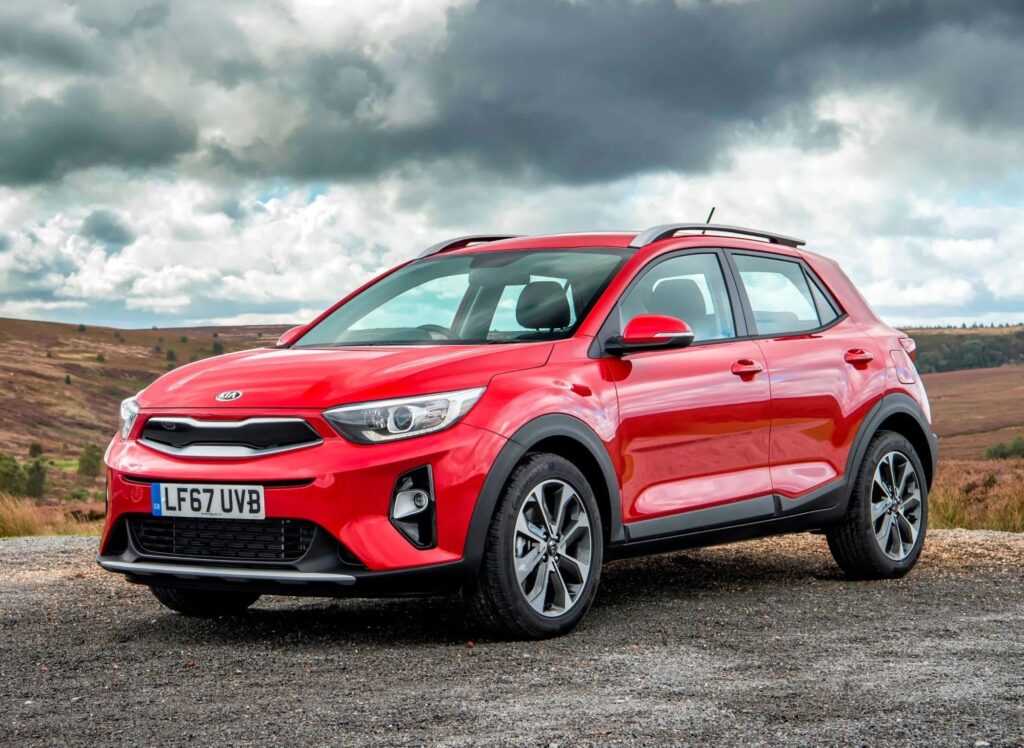
3. **Impression**The Impression stands as another colossal achievement in Chip Foose’s career, a coachbuilt custom that absolutely dominated the show circuit, clinching the coveted Ridler Award in 2005. Based on a 1936 Chevy, this car was an exercise in extreme customization, where “built from scratch” became the guiding principle. It represented Foose at his zenith, taking a familiar silhouette and elevating it into a rolling piece of art, all while retaining its quintessential soul.
Mounted on a bespoke custom chassis, the Impression was engineered for both performance and presence. Under the hood, it boasted an LS1 engine, ensuring that its stunning looks were backed by serious power. The independent suspension all around provided a modern ride quality and handling prowess that belied its vintage inspiration, a hallmark of Foose’s commitment to integrated design.
The level of craftsmanship on the Impression was, quite simply, on another level. Every single body panel—fenders, roofline, interior—was hand-fabricated, sculpted to perfection. Even elements typically hidden from view, like the underhood bracing, were meticulously sculpted, transforming utilitarian components into visual statements. This car was a vivid demonstration of Foose’s ability to reimagine and redefine, creating an automotive masterpiece that captivated judges and enthusiasts alike, a testament to turning a classic shape into something utterly timeless.
Read more about: A Glimpse into the Gilded Age: 12 Fascinating Snapshots of American Life 150 Years Ago
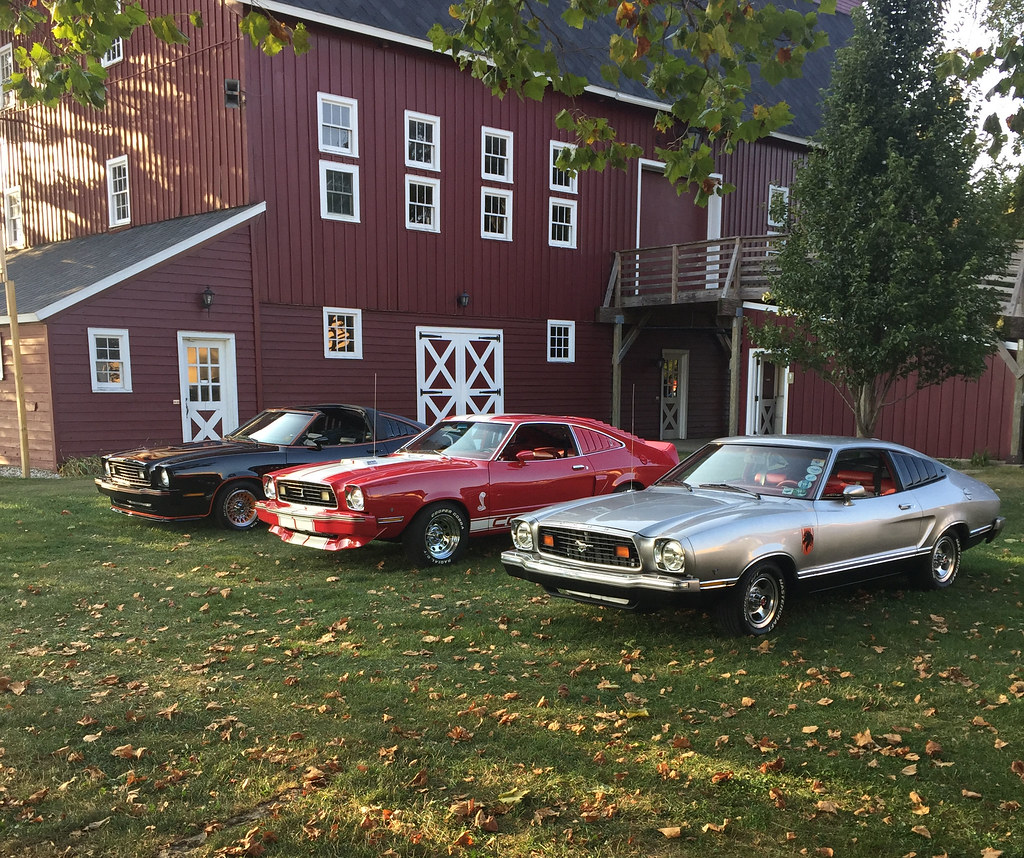
4. **Stallion Mustang**The Stallion Mustang represents Chip Foose’s distinctive approach to “OEM+” styling, where he takes an already strong factory platform and elevates it to something truly special without losing its street-friendly character. This 2006 Ford Mustang concept, developed in partnership with Ford and unveiled at SEMA, showcased Foose’s knack for subtle yet impactful refinements. He reworked the body lines, making them tighter and more aggressive, yet never venturing into “over-the-top” territory.
The genius of the Stallion lay in its nuanced modifications. Foose reshaped the bumpers, created a custom grille, and refined the car’s overall profile, resulting in a noticeably sharper and more cohesive aesthetic. These weren’t radical departures from the Mustang’s iconic design, but rather artful enhancements that amplified its inherent sportiness, creating a car that felt both familiar and exceptionally unique.
Performance was an equally critical component of the Stallion Mustang. Under its refined hood resided a supercharged 4.6L V8 engine, unleashing over 400 horsepower—a significant upgrade that underscored its performance ambitions. The car rode on custom Foose wheels, perfectly complementing its lowered stance and upgraded suspension, which further enhanced its handling dynamics. This build perfectly exemplified Foose’s ability to take a production car and imbue it with a distinctive, high-performance personality while maintaining an air of factory-level polish.
Car Model Information: 2008 Ford Mustang GT Premium
Name: Ford Mustang
Caption: 2018 Ford Mustang GT 5.0
Aka: Ford T5 (Germany)
Manufacturer: Ford Motor Company
Production: March 1964 – present
ModelYears: 1965–present
Class: Unbulleted list
BodyStyle: Unbulleted list
Layout: Front-engine, rear-wheel-drive layout
Categories: 1970s cars, 1980s cars, 1990s cars, 2+2 coupés, 2000s cars
Summary: The Ford Mustang is an American automobile manufactured and marketed by Ford since 1964, as Ford’s longest nameplate in continuous production. Currently in its seventh generation, it is the fifth-best selling Ford car nameplate. The namesake of the “pony car” automobile segment, the Mustang was developed as a highly styled line of sporty coupes and convertibles derived from existing model lines, initially distinguished by its pronounced “long hood, short deck” proportions.
Originally predicted to sell 100,000 vehicles yearly, the 1965 Mustang became the most successful vehicle launch since the 1927 Model A. Introduced on April 17, 1964 (16 days after the Plymouth Barracuda), over 400,000 units were sold in its first year; the one-millionth Mustang was sold within two years of its launch. In August 2018, Ford produced the 10-millionth Mustang; matching the first 1965 Mustang, the vehicle was a 2019 Wimbledon White convertible with a V8 engine.
The success of the Mustang launch led to multiple competitors from other American manufacturers, including the Chevrolet Camaro and Pontiac Firebird (1967), AMC Javelin (1968), and Dodge Challenger (1970). It also competed with the Plymouth Barracuda, which was launched around the same time. The Mustang also had an effect on designs of coupes worldwide, leading to the marketing of the Toyota Celica and Ford Capri in the United States (the latter, by Lincoln-Mercury). The Mercury Cougar was launched in 1967 as a unique-bodied higher-trim alternative to the Mustang; during the 1970s, it included more features and was marketed as a personal luxury car.
From 1965 until 2004, the Mustang shared chassis commonality with other Ford model lines, staying rear-wheel-drive throughout its production. From 1965 to 1973, the Mustang was derived from the 1960 Ford Falcon compact. From 1974 until 1978, the Mustang (denoted Mustang II) was a longer-wheelbase version of the Ford Pinto. From 1979 until 2004, the Mustang shared its Fox platform chassis with 14 other Ford vehicles (becoming the final one to use the Fox architecture). Since 2005, Ford has produced two generations of the Mustang, each using a distinct platform unique to the model line.
Through its production, multiple nameplates have been associated with the Ford Mustang series, including GT, Mach 1, Boss 302/429, Cobra (separate from Shelby Cobra), and Bullitt, along with “5.0” fender badging (denoting 4.9 L OHV or 5.0 L DOHC V8 engines).
Get more information about: Ford Mustang
Buying a high-performing used car >>>
Brand: Ford Model: Mustang
Price: $16,785 Mileage: 81,832 mi.
Read more about: Unlocking Automotive Dreams: 13 Manual Transmission Sports Cars from the 2000s That Are Now Unbelievable Bargains for Enthusiasts
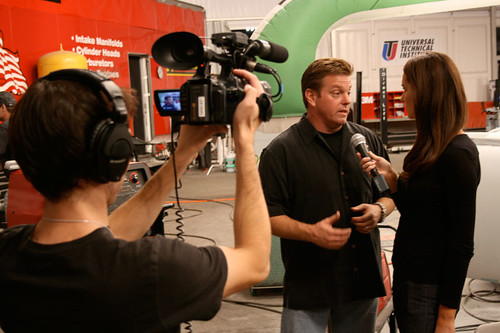
5. **Terracuda**The Terracuda is an astonishing testament to Chip Foose’s boundless creativity and his willingness to venture far beyond the conventional boundaries of custom car design. This one-off 1970 Plymouth Barracuda, built specifically for SEMA, was a wild and unexpected fusion: a muscle car reimagined with serious off-road capabilities. It took the iconic lines of a classic ‘Cuda and married them with rugged, purpose-built hardware, creating something truly unprecedented.
While the body retained the Barracuda’s unmistakable fastback lines, everything beneath it was designed for extreme off-road performance. The Terracuda featured a robust tube chassis, providing immense structural integrity for demanding terrain. Its long-travel suspension system allowed for incredible wheel articulation, while massive tires provided the necessary grip to conquer challenging landscapes, a stark contrast to the typical street-focused muscle car.
Powered by a formidable 6.4L HEMI V8 engine, the Terracuda had the grunt to back up its aggressive stance. Finished in earth tones, the car presented a striking visual paradox—a muscle car dressed for the wilderness. The brilliance of the Terracuda was how seamlessly these seemingly disparate styles converged into a cohesive, head-turning creation. It powerfully demonstrated that Foose could adeptly step outside the familiar street rod world and still produce something totally unexpected, innovative, and utterly captivating.
Car Model Information: 1971 Plymouth Barracuda
Caption: 1970 Hardtop Coupe
Name: Plymouth Barracuda
Manufacturer: Plymouth (automobile)
Production: 1964–1974
Assembly: Fenton, Missouri,Hamtramck, Michigan,Maywood, California,Windsor, Ontario
Layout: Front-engine, rear-wheel drive layout
Class: Pony car
Categories: 1970s cars, All articles with dead external links, All articles with unsourced statements, Articles with dead external links from February 2018, Articles with dead external links from January 2022
Summary: The Plymouth Barracuda is a two-door pony car that was manufactured by Chrysler Corporation from 1964 through 1974 model years.
The first-generation Barracuda was based on the Chrysler A-body and was offered from 1964 until 1966. A two-door hardtop (no B-pillar) fastback design, it shared a great majority of parts and bodywork with the Plymouth Valiant, except for the distinctive wraparound rear glass.
The second-generation Barracuda, though still Valiant-based, was heavily redesigned. Built from 1967 through 1969, it was available as a two-door in fastback, notchback, and convertible versions.
The third generation, offered from 1970 until 1974, was based on the Chrysler E-body, exclusive to it, and the slightly larger Dodge Challenger. A completely new design, the two-door Barracuda was available in hardtop and convertible body styles.
Get more information about: Plymouth Barracuda
Buying a high-performing used car >>>
Brand: Plymouth Model: Barracuda
Price: $44,999 Mileage: 12,468 mi.

6. **FD-100 F-100**Venturing into the deeply personal, the FD-100 F-100 stands as one of Chip Foose’s most sentimental and significant projects. This incredible creation, a modern interpretation of a 1956 Ford F-100, was built specifically for his father, Sam Foose. It’s a rolling tribute, blending a son’s artistic vision with a father’s enduring legacy in automotive design.
Foose completely redesigned the F-100 from the ground up, infusing it with his signature sleekness and aggressive styling. The body was meticulously smoothed, eliminating extraneous lines to create a seamless, flowing form. He crafted a custom bed, perfectly integrated into the truck’s new silhouette, and gave it a radically slammed stance over massive, custom wheels. The front hood was reshaped with more curves, and the bumper shortened about a foot for a muscular look, complemented by parallel pinstripes.
Beneath the flawless exterior, serious performance resided. Power came from a robust Roush Aluminum Sideoiler engine, ensuring exhilarating power to match its stunning looks. Inside, the cabin featured hand-stitched leather surfaces and exquisitely brushed metal trim. Every element, down to the custom-machined door hinges, spoke volumes about the insane build quality and dedication. The FD-100 F-100 remains one of the cleanest F-100s ever built, a perfect blend of style, power, and profound sentiment.

7. **Imposter Impala**Chip Foose’s “Imposter” Impala is a groundbreaking demonstration of his mastery in blending classic automotive heritage with cutting-edge modern performance. This award-winning custom is a true marvel, marrying the iconic silhouette of a 1965 Impala with the sophisticated underpinnings of a contemporary 2009 Corvette chassis. It’s a testament to Foose’s audacious vision, combining two distinct eras of automotive excellence into a singular, compelling vehicle.
Achieving this seamless integration required immense meticulous fabrication and design ingenuity. The original 1965 Impala body underwent extensive modification, skillfully shortened, narrowed, and reshaped with precision to perfectly conform to the Corvette chassis. The challenge was to ensure that while adapting to the modern platform, the Impala’s vintage character and unmistakable lines were preserved and enhanced, resulting in a car both familiar and incredibly fresh.
The Imposter Impala isn’t just about its stunning visual transformation; it backs up its looks with serious hardware. Under its artfully reworked hood lies a potent 6.2L LS3 V8 engine, paired with a smooth-shifting six-speed automatic transmission, delivering a distinctly modern and exhilarating performance. The interior continues this theme, blending classic cues with contemporary comfort through reworked gauges and luxurious stitched leather surfaces. This build earned the prestigious 2015 Ridler Award, solidifying its place as a masterclass in custom automotive design.
Car Model Information: 1966 Chevrolet Impala SS
Name: Chevrolet Impala
Caption: Fourth-generation model (1967)
Manufacturer: Chevrolet
Production: 1957–1985,1994–1996,1999–2020
ModelYears: 1958–1985,1994–1996,2000–2020
Predecessor: Chevrolet Bel Air,Chevrolet Lumina#Second generation (1995–2001)
Successor: Chevrolet SS,Chevrolet Caprice
Platform: GM B platform,GM W platform,GM W platform (GMX211) (2005–2013),GM Epsilon platform#Epsilon II
Class: Full-size car,Mid-size car
Layout: Front-engine, rear-wheel-drive layout,Front-engine, front-wheel-drive layout
Categories: 1960s cars, 1970s cars, 1980s cars, 1990s cars, 2000s cars
Summary: The Chevrolet Impala () is a full-size car that was built by Chevrolet for model years 1958 to 1985, 1994 to 1996, and 2000 to 2020. The Impala was Chevrolet’s popular flagship passenger car and was among the better-selling American-made automobiles in the United States.
For its debut in 1958, the Impala was distinguished from other models by its symmetrical triple taillights. The Chevrolet Caprice was introduced as a top-line Impala Sport Sedan for model year 1965, later becoming a separate series positioned above the Impala in 1966, which, in turn, remained above the Chevrolet Bel Air and the Chevrolet Biscayne. The Impala continued as Chevrolet’s most popular full-sized model through the mid-1980s. Between 1994 and 1996, the Impala was revised as a 5.7-liter V8–powered version of the Chevrolet Caprice Classic sedan.
In 2000, the Impala was reintroduced again as a mainstream front-wheel drive car. In February 2014, the 2014 Impala ranked No. 1 among Affordable Large Cars in U.S. News & World Report’s rankings. When the 10th generation of the Impala was introduced for the 2014 model year, the 9th generation was rebadged as the Impala Limited and sold only to fleet customers through 2016. During that time, both versions were sold in the United States and Canada. The 10th-generation Impala was also sold in the Middle East and South Korea.
Get more information about: Chevrolet Impala
Buying a high-performing used car >>>
Brand: Chevrolet Model: Impala
Price: $56,991 Mileage: 51,426 mi.
Read more about: Ignition Roar & Asphalt Dreams: The 8 Iconic Chevy Muscle Cars Every Enthusiast Should Know
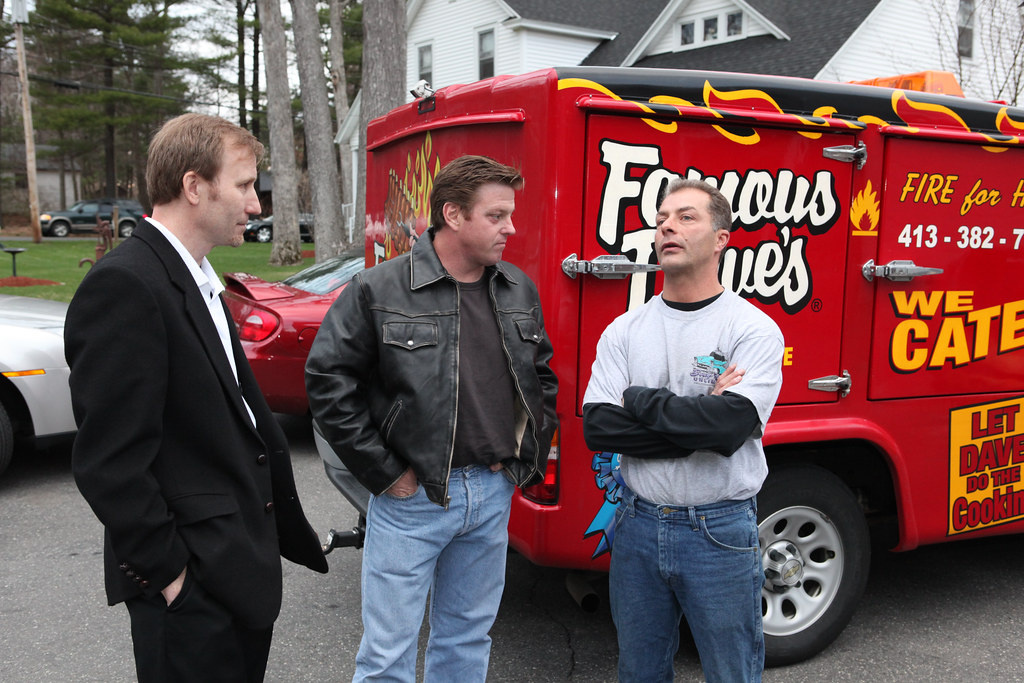
8. **Grandmaster**The 1935 Chevrolet “Grandmaster” is a quintessential Chip Foose creation, a vehicle that transcends mere customization to become a rolling sculpture of unparalleled elegance and technical prowess. Unveiled at the 2002 Detroit Autorama, this magnificent sedan didn’t just win the highly coveted Ridler Award; it emphatically cemented Foose’s reputation for achieving next-level craftsmanship and design perfection. He reimagined a vintage platform with visionary artistry.
Starting with a 1935 Chevy Master two-door sedan, Foose embarked on a complete transformation. The entire body was hand-fabricated, sculpted to flawless proportions, creating a seamless aesthetic where every line flowed harmoniously. This commitment to uninterrupted design eliminated harsh edges or clashing lines, resulting in an automotive form that feels both classic and effortlessly modern.
Powering the Grandmaster was a formidable Corvette LT4 engine, providing a contemporary powertrain that underscored its blend of vintage appeal and modern performance. The custom-built chassis was engineered to support this sophisticated integration, ensuring exceptional ride and handling. Inside, the interior mirrored the exterior’s meticulous attention to detail, matching its tone and design to create a unified, luxurious cabin. The Grandmaster stands as a definitive masterclass in design execution, elevating a classic into a timeless icon.
Read more about: Totally Twisted, 14 Movies Where The Main Character Is Pure Evil (And We Still Root For Them)

9. **Custom 1974 Jaguar E-Type**Chip Foose’s approach to the Custom 1974 Jaguar E-Type showcases his profound respect for classic automotive design combined with his ability to subtly enhance and modernize. This project stands as one of his most remarkable achievements, a meticulous restoration and customization that elevated the E-Type’s already iconic style while retaining its inherent elegance. It’s a perfect example of his philosophy: make it better, but keep it classic.
Foose began by retaining the car’s original body and chassis, understanding the E-Type’s fundamental structure was sacrosanct. However, he embarked on a series of significant, yet understated, upgrades beneath the surface to drastically improve its driving dynamics. The suspension system was re-engineered, brakes enhanced for superior stopping power, and a custom exhaust system fitted, all contributing to improved handling and an exhilarating surge of power.
A new metallic silver paint job draped over its timeless curves, giving the E-Type a fresh, sophisticated luster. Foose further distinguished the car with a custom front grille, a subtle modification that imbued the classic with a more aggressive, contemporary edge. Inside, the transformation continued with new leather seats, bespoke custom gauges, and a state-of-the-art audio system, seamlessly integrating 21st-century comfort and technology. This Custom 1974 Jaguar E-Type is a breathtaking testament to Foose’s vision, a perfect blending of quintessential Jaguar style with his distinctive design ethos.
Car Model Information: 1974 Jaguar E-Type XKE Roadster
Sp: uk
Name: Jaguar E-Type
Caption: 1961 E-Type Series 1 3.8-Litre, the first production model of this open two-seater
Aka: Jaguar XK-E (North America),Jaguar V-12
Manufacturer: Jaguar Cars
Production: 1961–1974
Class: Sports car
Predecessor: Jaguar XK150
Related: Jaguar D-Type,Jaguar XJ13
Successor: Jaguar XJS
Layout: FMR layout
Assembly: Coventry,England
Designer: Malcolm Sayer
Categories: 1970s cars, 2+2 coupés, All Wikipedia articles written in British English, All articles with dead external links, All articles with specifically marked weasel-worded phrases
Summary: The Jaguar E-Type, or the Jaguar XK-E for the North American market, is a British front mid-engined sports car that was manufactured by Jaguar Cars Ltd from 1961 to 1974. Its sleek appearance, advanced technologies, high performance, and competitive pricing established it as an icon. The E-Type’s claimed 150 miles per hour (240 km/h) top speed, sub-7-second 0 to 60 mph (97 km/h) acceleration, largely unitary body construction, front and rear independent suspension with disc brakes, mounted inboard at the rear, and rack-and-pinion steering spurred industry-wide changes.
The E-Type was based on Jaguar’s D-Type racing car, which had won the 24 Hours of Le Mans for three consecutive years beginning in 1955.
The E-Type employed what was, for the early 1960s, a novel design principle, with a front subframe carrying the engine, front suspension and front bodywork bolted directly to the body tub. No ladder frame chassis, as was common at the time, was needed and as such the first cars weighed only 1,315 kg (2,899 lb).
It is rumored that, on its debut on 15 March 1961, Enzo Ferrari called it “the most beautiful car ever made”, but this statement is not fully confirmed. In 2004, Sports Car International magazine placed the E-Type at number one on their list of Top Sports Cars of the 1960s. In March 2008, the Jaguar E-Type ranked first in The Daily Telegraph’s online list of the world’s “100 most beautiful cars” of all time.
Get more information about: Jaguar E-Type
Buying a high-performing used car >>>
Brand: Jaguar Model: E-Type
Price: $79,900 Mileage: 23,675 mi.
Read more about: Buckle Up, Boomers! 12 Legendary Rides from Your Youth That Are STILL a Total Blast to Drive
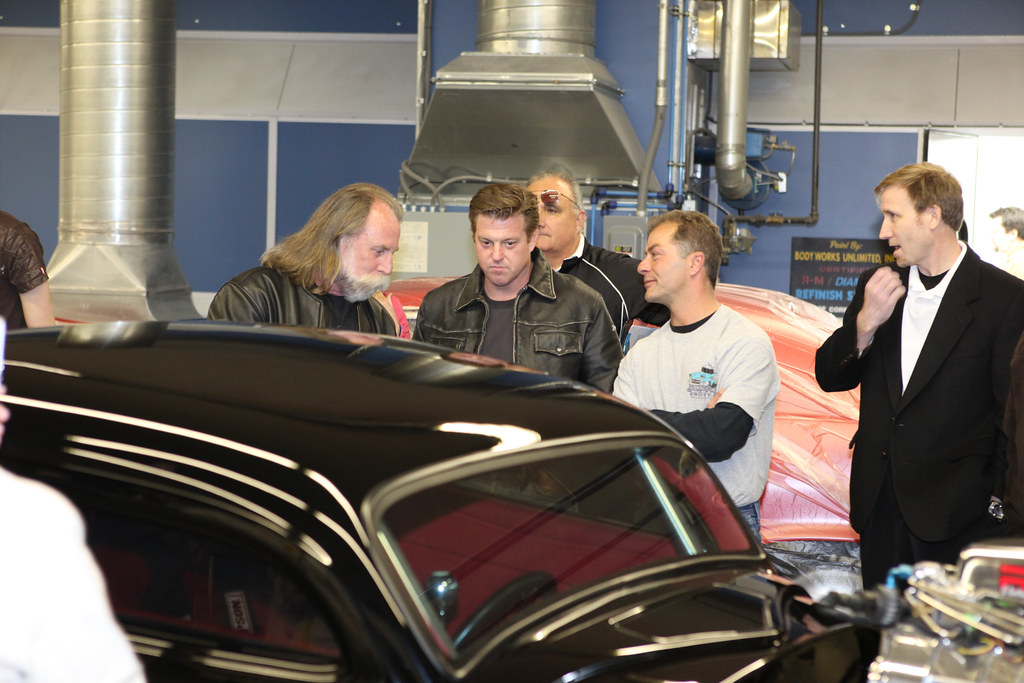
10. **Foose Pantera**The “Foose Pantera” stands as a vibrant testament to Chip Foose’s lifelong fascination with the De Tomaso Pantera, particularly the distinctive push-button models of the 1970s. This stunning red 1971 Pantera, unveiled with his “Overhaulin'” co-host Chris Jacobs at the 2015 SEMA Show, represents a deeply personal project, reflecting his enduring admiration for the Italian-American hybrid.
While many of the Pantera’s iconic lines remained untouched, Foose meticulously applied his signature touches to enhance its aesthetic and performance. He rebuilt the heart of the beast, installing a powerful 351 Cleveland engine that breathed new life into its performance capabilities. The car’s stance was further refined to be even more low-slung, giving it an undeniable gravitas and an aggressive, ground-hugging profile instantly recognizable as a Foose creation.
The custom “Foose wheels” are a defining visual element, perfectly complementing the car’s aggressive posture, while a Magnaflow exhaust system not only elevates its appearance but also unleashes a throaty roar. This blend of subtle modifications and strategic enhancements makes the Foose Pantera a truly special machine. As Chris Jacobs lauded during its SEMA unveiling, “This is typical Foose work…”, an endorsement of the seamless integration of classic design with modern performance and unmistakable Foose flair. Foose also shared pictures of his latest creation on his X account after the show.
Car Model Information: 2023 Jeep Wrangler Sahara
Name: De Tomaso Pantera
Caption: De Tomaso Pantera GT5-S
Manufacturer: De Tomaso
Assembly: Modena
Production: 1971–1992 (7,260 produced)
Designer: Tom Tjaarda,Marcello Gandini
Class: Sports car
BodyStyle: coupé
Layout: Rear mid-engine, rear-wheel-drive layout
Engine: ubl
Abbr: on – later spec
Order: Ford small block engine#351W
Transmission: Manual transmission,List of ZF transmissions
Wheelbase: 2500 mm
Length: 158 in
Disp: flip – later spec
Width: 67 in
Height: 1100 mm
Weight: 1474 kg
Predecessor: De Tomaso Mangusta
Successor: De Tomaso Guarà
Categories: 1980s cars, 1990s cars, All Wikipedia articles needing clarification, Articles with hAudio microformats, Articles with short description
Summary: The De Tomaso Pantera is a mid-engine sports car produced by Italian automobile manufacturer De Tomaso from 1971 to 1992. Italian for “Panther”, the Pantera was the automaker’s most popular model, with over 7,000 manufactured over its twenty-year production run. More than three quarters of the production were sold by American Lincoln-Mercury dealers from 1972 to 1975; after this agreement ended De Tomaso kept manufacturing the car in ever smaller numbers into the early 1990s.
Get more information about: De Tomaso Pantera
Buying a high-performing used car >>>
Brand: De Tomaso Model: Pantera
Price: $31,077 Mileage: 41,012 mi.
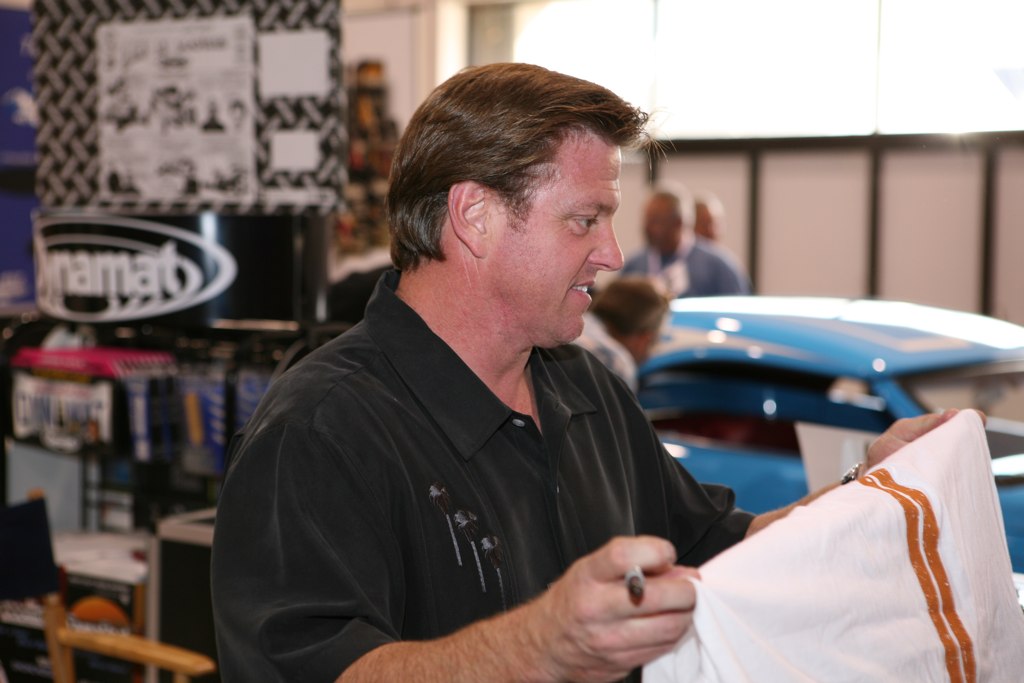
11. **P-32 Street Fighter**The P-32 Street Fighter is a singularly audacious and unconventional creation, a raw and powerful testament to Chip Foose’s ability to draw inspiration from unexpected sources. Conceived as a celebration of the iconic WWII P-51 Mustang bomber and the rebellious spirit of rat rods, this car is a visceral blend of historical homage and stripped-down automotive aggression. It started life as a 1932 Ford with a Brookville body, but Foose transformed it into something entirely unique.
At its core, the P-32 is powered by a distinctive flat-head Lincoln V-12 engine, a choice that sets it apart. The exposed exhaust manifold tips are a deliberate design nod, artfully crafted to resemble the iconic “shark mouth” livery and exhaust stacks of the Curtiss P-40 Warhawk fighter plane, creating a direct visual link to its aerial inspirations. This meticulous attention to thematic detail elevates the P-32 beyond a mere hot rod into a rolling piece of historical and artistic expression.
This unique vehicle has garnered significant attention, even catching the eye of Hollywood. Famously, Tom Cruise’s management team once called Chip Foose, inquiring about acquiring the P-32 Street Fighter as a birthday gift for the actor. In true Foose fashion, Chip extended a memorable counter-offer: he would gladly give away his Street Fighter if Tom Cruise would trade him his legendary P-51 Mustang. As Foose humorously expressed in an official YouTube video, addressing Tom directly, “…and uh that offer, still holds Tom,” underscoring the P-32’s unique allure.
Car Model Information: 2023 Chevrolet Silverado 1500 ZR2
Name: Makoto
Caption: Street Fighter III
Series: Street Fighter
First: Street Fighter III: 3rd Strike
Designer: Keigo Chimoto
Voice: English language
Origin: Japan
Nationality: Japanese people
FightingStyle: Karate
Categories: Articles containing Japanese-language text, Articles with short description, CS1 Chinese-language sources (zh), CS1 Japanese-language sources (ja), CS1 Portuguese-language sources (pt)
Summary: Makoto (Japanese: まこと) is a character in Capcom’s Street Fighter fighting game series, designed by Keigo Chimoto and first appearing in 1999’s Street Fighter III: 3rd Strike. In the series, she is a young Japanese woman who utilizes her family’s dojo teachings of Rindo-kan karate as her fighting style, seeking to restore glory to her deceased father’s dojo. She has since appeared in UDON Entertainment’s Street Fighter comic series, and due to her overwhelming popularity was included in Street Fighter IV’s first upgrade, Super Street Fighter IV. Makoto is voiced by Makoto Tsumura in Japanese for both of her appearances, and Jessica D. Stone in English for Street Fighter IV.
The character has been positively received, in both location tests for the original game and a later official poll in which she placed second out of all the characters. Particularly, the staff of 1UP.com declared her as one of the key reasons they prefer 3rd Strike over the preceding Street Fighter III titles. Several outlets have declared her their favorite character in the franchise, and others have praised her design and character heavily in contrast of other series characters.
Get more information about: Makoto (Street Fighter)
Buying a high-performing used car >>>
Brand: Ford Model: P-32 Street Fighter
Price: $55,987 Mileage: 16,987 mi.
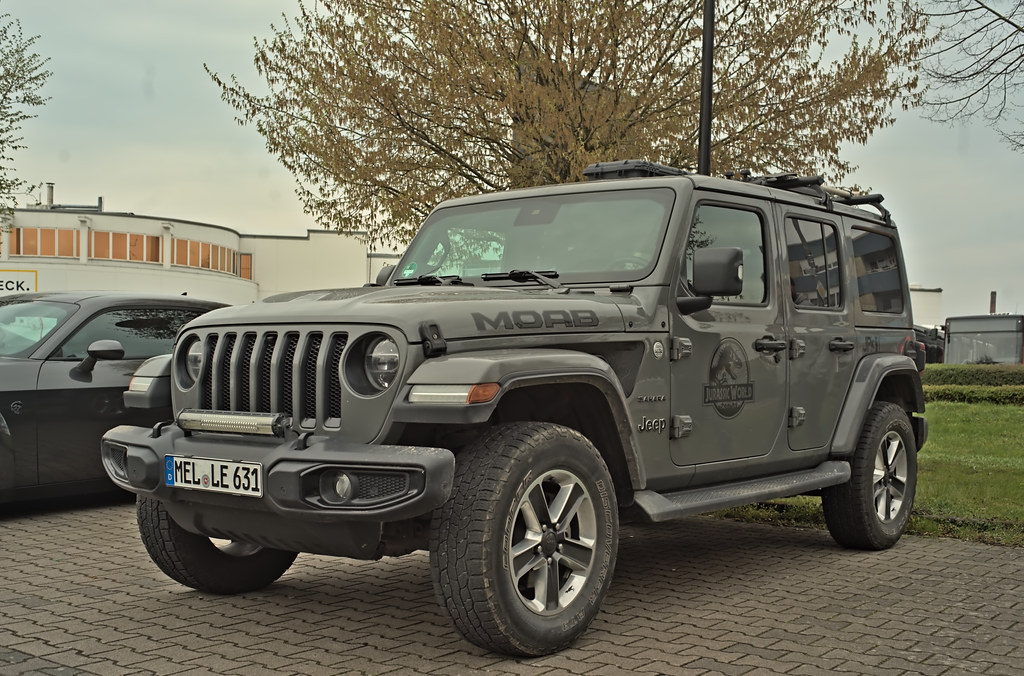
12. **Madam X**Rounding out this incredible collection of Foose masterpieces is the “Madam X,” a bespoke creation that redefines luxury and presence, inspired by an original 1935 Cadillac concept sketch. This project stands as a breathtaking example of Chip Foose’s ability to take a historical concept and bring it to life with unparalleled precision and modern flair. It’s not just a car; it’s a tangible realization of a bygone era’s dream, executed with contemporary engineering.
Originally envisioned by renowned designer Mr. R. Ross in 1935 as a concept convertible, Chip Foose and his skilled crew undertook the ambitious task of translating this vision into a tangible vehicle. While the original inspiration was for a 1935 Cadillac, the actual base for the customized two-door model was a 1939 Cadillac Four-Door 60 Special, which Foose masterfully transformed. His personalized “Madam X” is noticeably shorter and boasts a dramatically lowered stance, giving it a unique, sleek, and elegant profile that commands attention.
The overarching theme of this build was to remain absolutely true to Ross’s original sketch, creating a car that genuinely looked like a conceptual Cadillac from that golden age. Every line, every curve, was meticulously crafted to embody this vision. Unveiled at the 2018 SEMA Show in Las Vegas, the Madam X instantly became a showstopper. Underneath its exquisite coachbuilt body, it featured a Gen V LT-1 engine paired with an 8-speed automatic transmission, blending vintage aesthetics with robust modern performance. The Madam X is a profound statement of design, a seamless bridge between automotive history and visionary contemporary craftsmanship.
Car Model Information: 2023 Jeep Wrangler Sahara
Name: Martin Henderson
Caption: Henderson in 2006
BirthDate: [object Object]
BirthPlace: Auckland
Education: Westlake Boys High School
Occupation: Actor
YearsActive: 1989–present
Categories: 1974 births, 20th-century New Zealand male actors, 21st-century New Zealand male actors, All Wikipedia articles written in British English, Articles with hCards
Summary: Martin Henderson (born 8 October 1974) is a New Zealand actor. He is known for his roles on the American medical drama series Off the Map as Dr. Ben Keeton (2011), the medical drama series Grey’s Anatomy as Dr. Nathan Riggs (2015–2017), the Netflix romantic drama Virgin River as Jack Sheridan (2019–present), and for his performances as Noah Clay in the horror film The Ring (2002) and Wayne Gilroy in the slasher film X (2022). In his home country, he is known for his teenage role as Stuart Neilson in the soap opera Shortland Street (1992–1995).
Get more information about: Martin Henderson
Buying a high-performing used car >>>
Brand: Cadillac Model: Madam X
Price: $31,077 Mileage: 41,012 mi.
Read more about: Unraveling the Roots of a Legend: Elvis Presley’s Journey Before His Family Began
Chip Foose’s enduring legacy isn’t merely in the individual vehicles he’s crafted, but in the indelible blueprint he’s laid for the entire custom car industry. From sentimental tributes to family to audacious blends of modern performance with classic forms, and from award-winning showstoppers to boundary-pushing concepts, his work consistently demonstrates an unmatched dedication to design, engineering, and artistic expression. Each car we’ve explored is a chapter in the ongoing story of a true automotive icon, proving that with vision, skill, and an unwavering passion for the automobile, anything is possible on the open road and beyond. The machines he creates are not just metal and glass; they are dreams forged, legends realized, and timeless works of art that continue to inspire.


